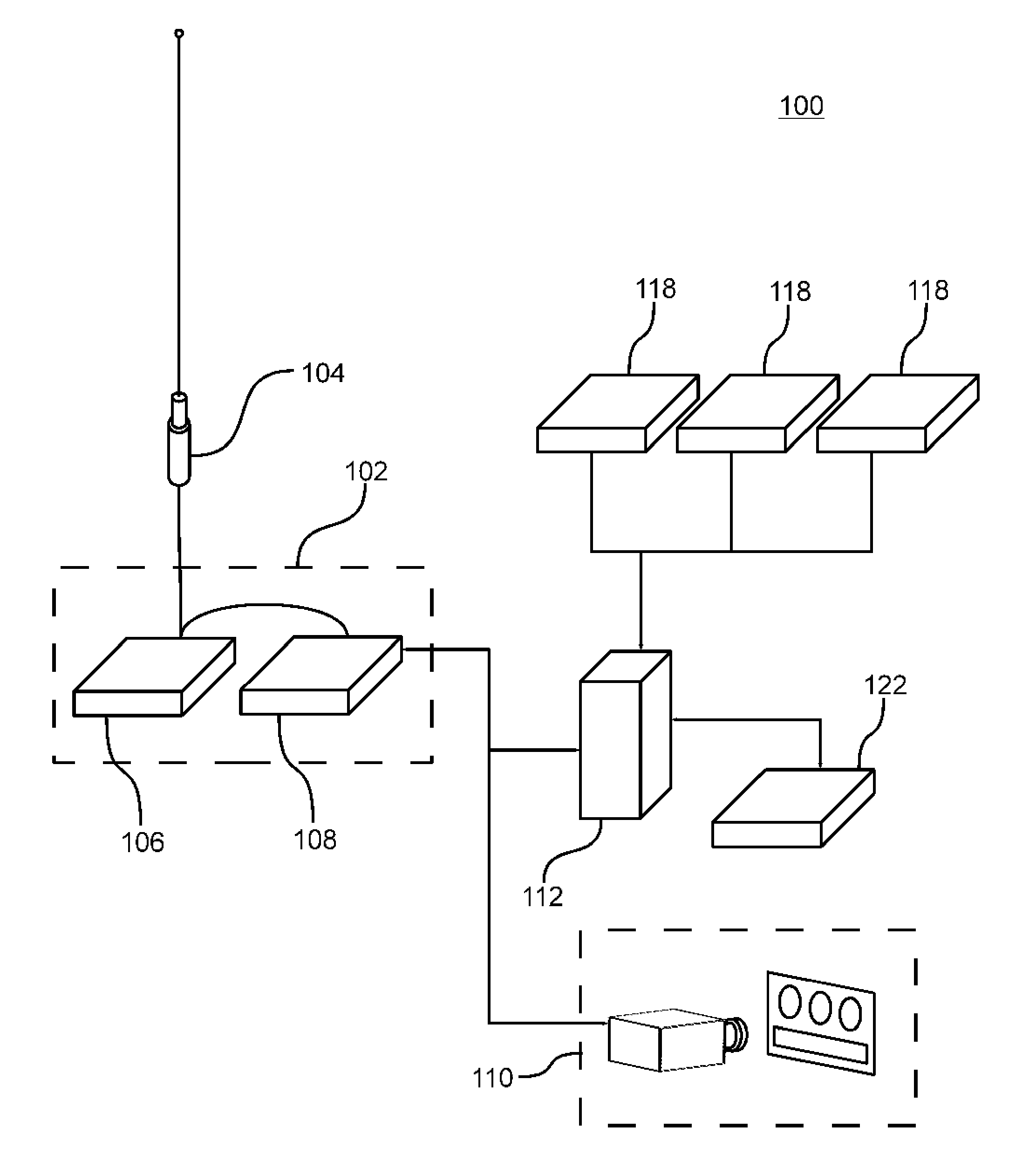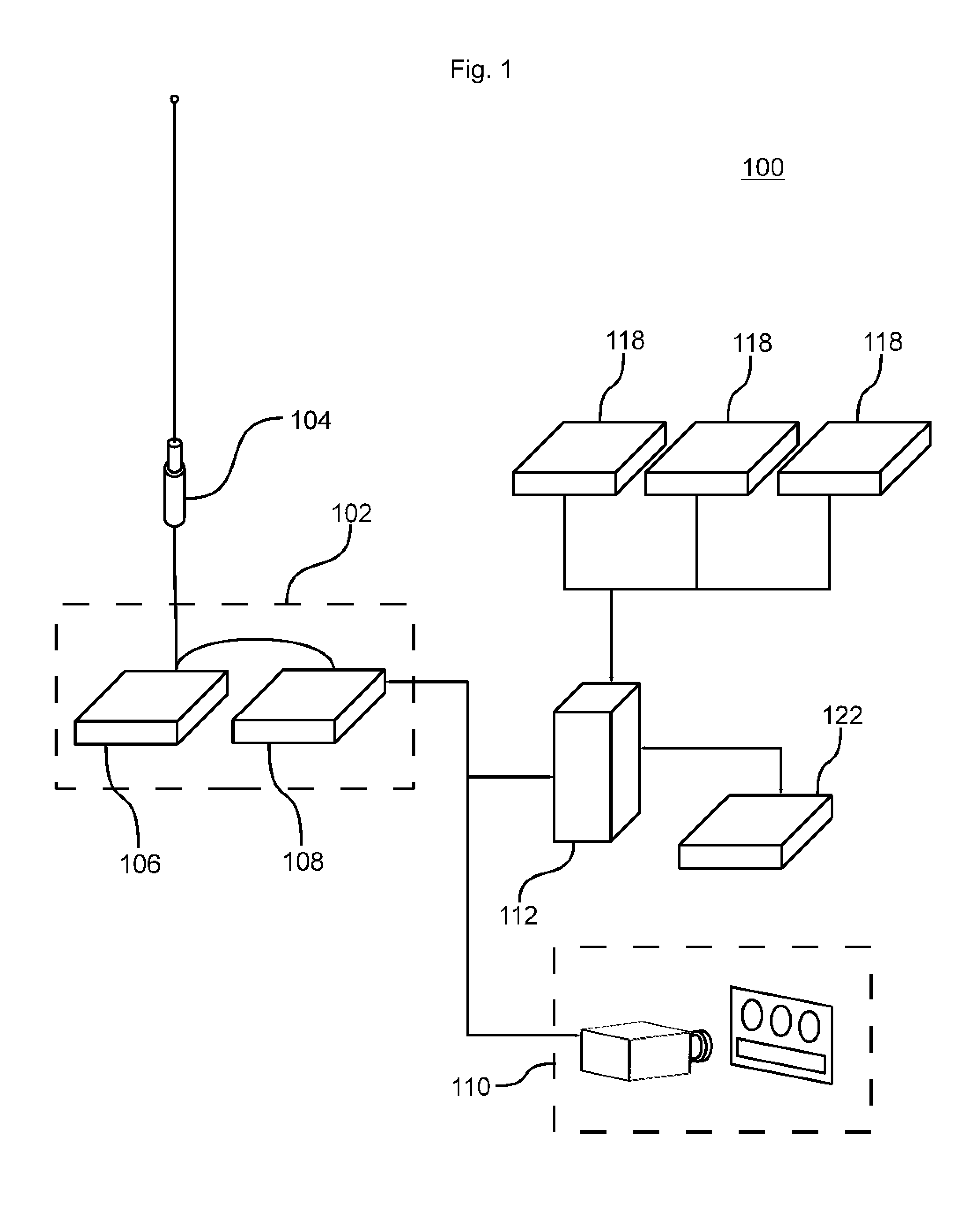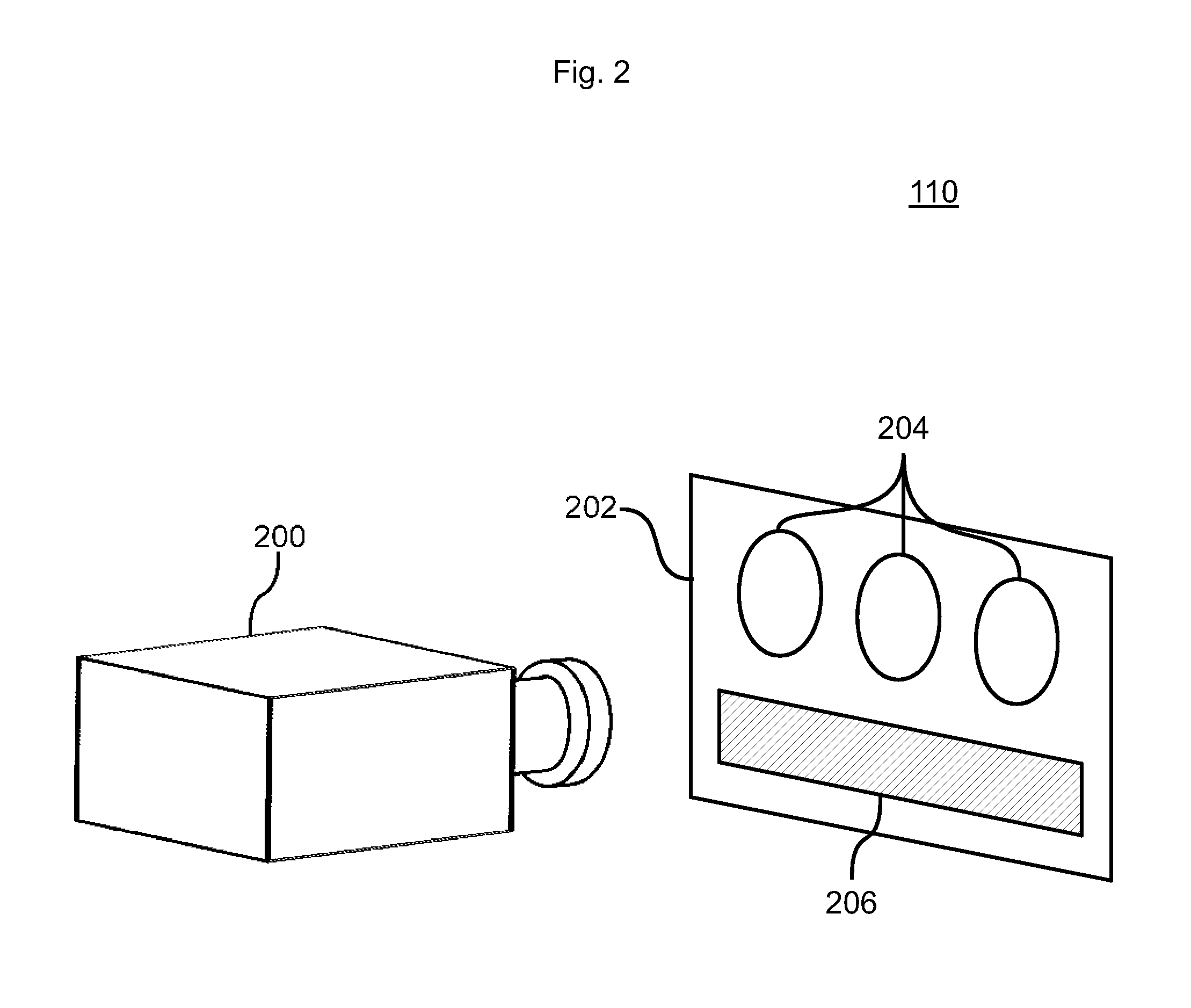System and method for remote monitoring of equipment moisture exposure
- Summary
- Abstract
- Description
- Claims
- Application Information
AI Technical Summary
Benefits of technology
Problems solved by technology
Method used
Image
Examples
Embodiment Construction
[0020]Illustrative embodiments of the present principles are disclosed herein. However, techniques, systems and operating structures in accordance with the present principles may be embodied in a wide variety of forms and modes, some of which may be different from those in the disclosed embodiment. Consequently, the specific functional details disclosed herein are merely representative, yet in that regard, they are deemed to afford the best embodiment for purposes of disclosure and to provide a basis for the claims herein which define the scope of the present principles.
[0021]Some elements of the present principles are illustrated as modules for performing described functions. While these modules may be described in terms of software implementations, any hardware, or combination of hardware and software may be used to implement the present principles without deviating from the scope or spirit thereof.
[0022]Moreover, well known methods and procedures for both carrying out the objecti...
PUM
 Login to View More
Login to View More Abstract
Description
Claims
Application Information
 Login to View More
Login to View More - R&D Engineer
- R&D Manager
- IP Professional
- Industry Leading Data Capabilities
- Powerful AI technology
- Patent DNA Extraction
Browse by: Latest US Patents, China's latest patents, Technical Efficacy Thesaurus, Application Domain, Technology Topic, Popular Technical Reports.
© 2024 PatSnap. All rights reserved.Legal|Privacy policy|Modern Slavery Act Transparency Statement|Sitemap|About US| Contact US: help@patsnap.com










